
Travel Diary: Exploring Japan with the Three Musketeers & co
In a peaceful American town, three sisters, Georgette, Cece, and Elle, had been brimming with excitement as they meticulously prepared for an adventure that was supposed to lead them to Senegal, where they anticipated vibrant markets, the rhythms of African melodies, and the warm embrace of Senegal’s culture. However, destiny had other plans, and their dreams were abruptly set aside.
On a fateful evening, their long-anticipated Senegal journey was canceled, leaving them disheartened but not defeated. Instead of dwelling on their dashed hopes, the sisters convened in their cozy virtual gathering spot, aptly named WhatsApp, where they sipped tea and brainstormed alternative destinations. It was Elle, the youngest of the trio, whose eyes gleamed with enthusiasm as she proposed Japan as their new voyage.
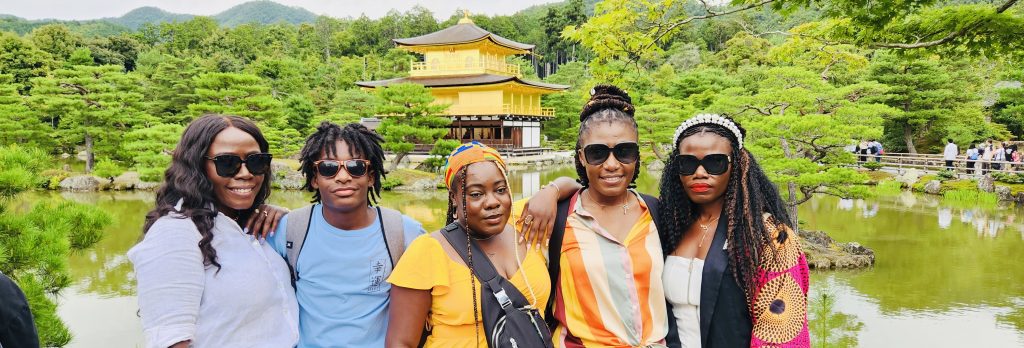
Cece, who had initially dreamt of Bali, temporarily set aside her aspirations. Nonetheless, the prospect of exploring Japan piqued the curiosity of all three, drawn by its rich culture, breathtaking landscapes, bustling cities, and Gabe’s passion for anime.
With newfound determination, the sisters embarked on careful planning. Cece and their niece Kem delved into research, uncovering the optimal time to visit, must-see locations, and local customs to respect.
Despite Gabe’s demanding schedule, they found themselves en route to Japan during the scorching August heat, unwavering in their commitment to immerse themselves in the beauty and culture of Japan.
Finally, the day arrived, and “Les Trois Mousquetaires” and their companions boarded a plane, eagerly anticipating the vibrant energy of Tokyo. As their wheels touched down on Japanese soil, they were enveloped in the city’s vivid aura, with neon lights illuminating their path and the alluring scent of street food drawing them in.
Embracing the Sweltering Summer
Arriving in Japan during the sweltering August heat, the sisters, along with Gabe and Kem, were welcomed by the warm embrace of Japanese summer. The weather posed a challenge, but it did not waver their determination to explore the country’s beauty.
After checking into their hotel, Cece and Elle were somewhat disappointed by the room’s size, realizing they had not conducted sufficient research to understand cultural differences in living spaces. Georgette, on the other hand, was content as long as the hotel was clean, while Elle and Cece exhibited a penchant for more luxurious accommodations.
Despite their late arrival, they ventured to the hotel’s restaurants for dinner, where they discovered delightful cuisine with surprisingly modest portion sizes. Nevertheless, they made the most of it, savoring the variety of options offered at the buffet. With plans to explore Tokyo early the next morning, they retired early.
Tokyo – The City That Never Sleeps

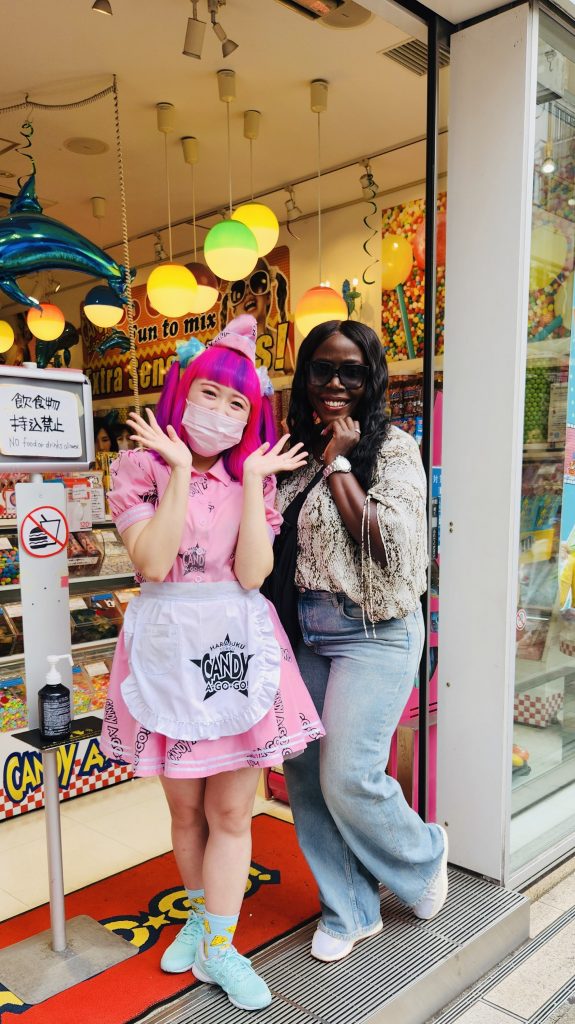


Their first destination was the iconic Shibuya Crossing, a mesmerizing display of organized chaos that filled them with excitement. Capturing the moment with their cameras, they experienced a rush of exhilaration. Tokyo’s neon-lit Shinjuku district, the tranquility of Meiji Shrine, and the bustling Akihabara district all contributed to their Tokyo experience. They couldn’t resist exploring the trendy boutiques in Harajuku.
Their culinary adventures were equally captivating, from savoring steaks and sushi at the Tsukiji Fish Market to enjoying hot bowls of ramen in local eateries. Cece, however, adhered to her familiar choices due to her dietary limitations, with her IBS presenting some challenges.
Kyoto – The Cultural Jewel


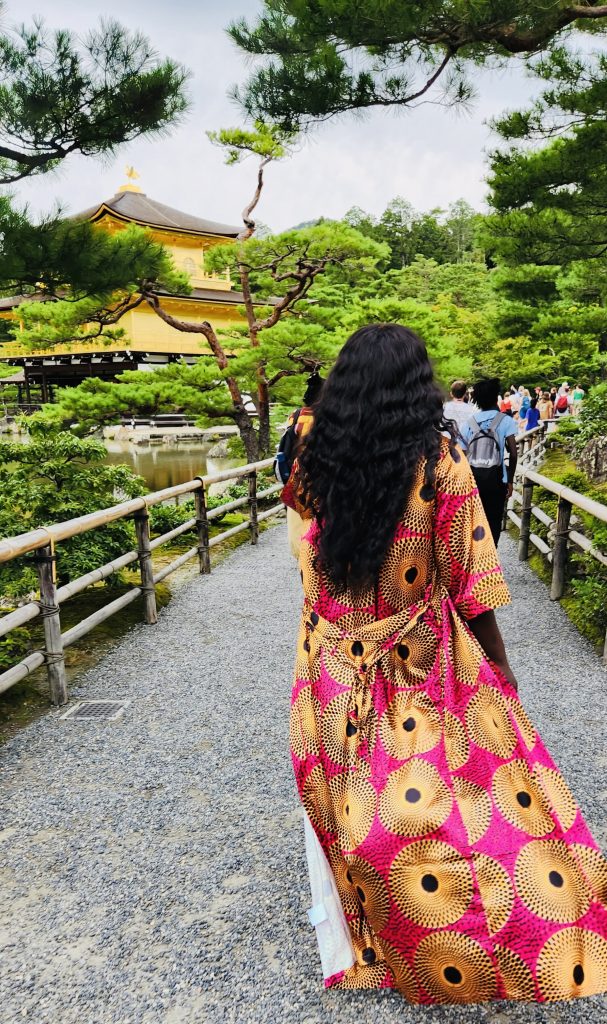
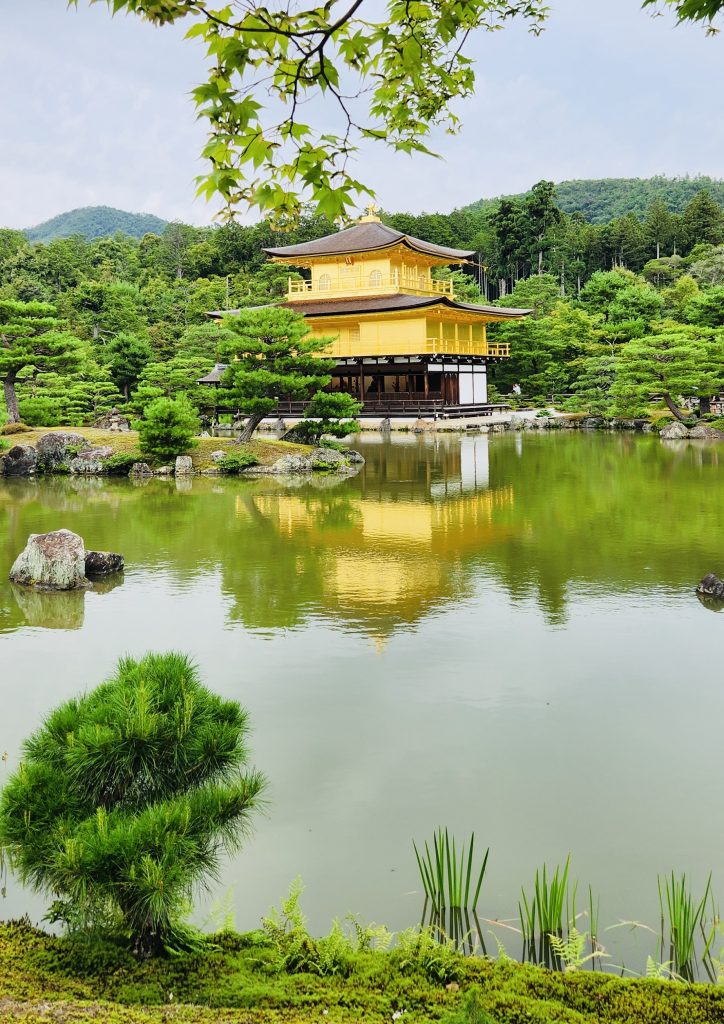
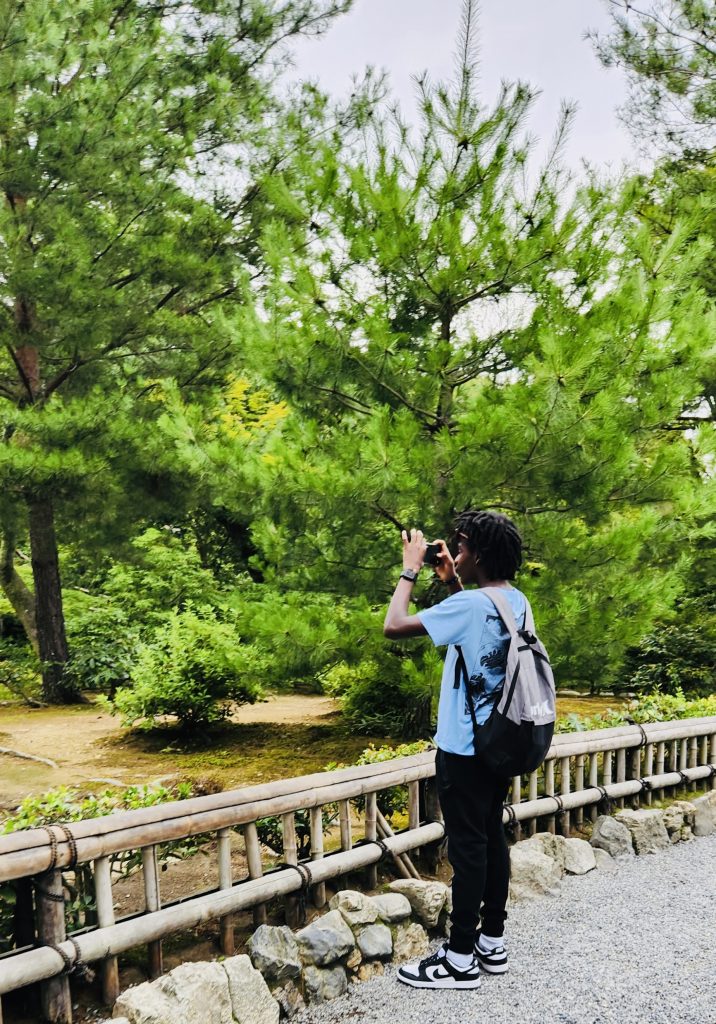

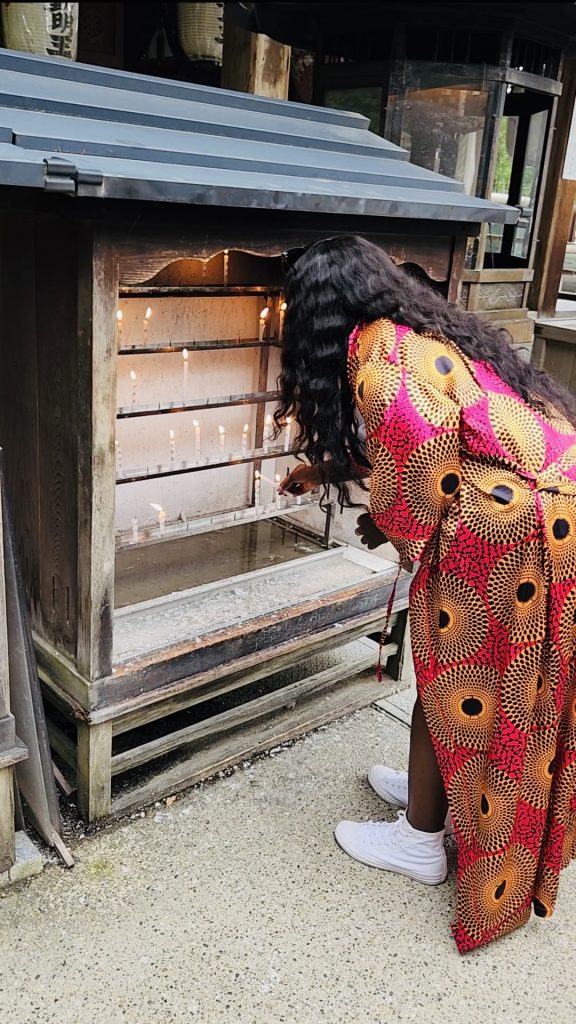
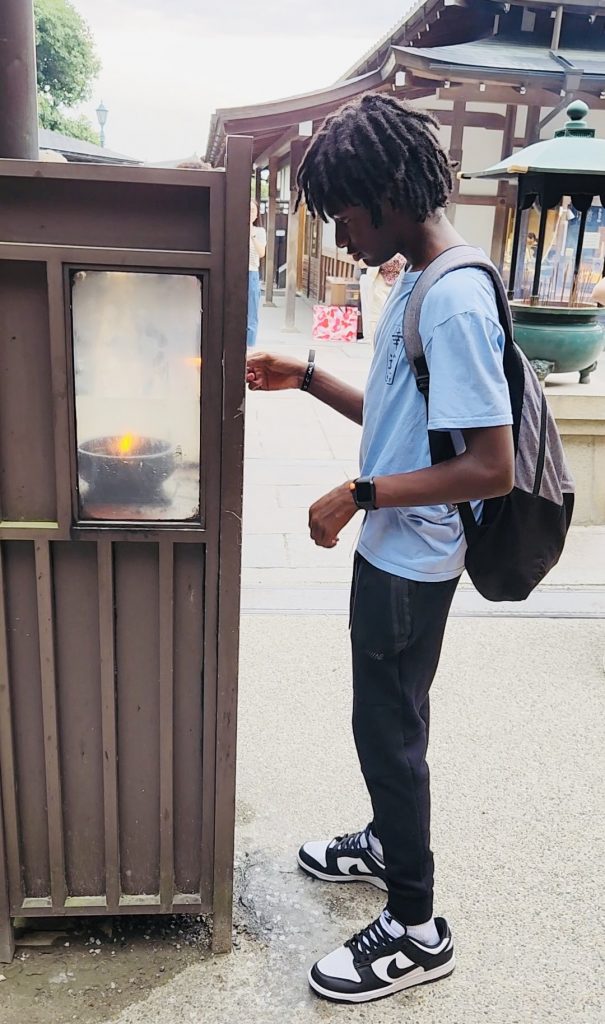


Boarding a Shinkansen (bullet train) bound for Kyoto, they journeyed into a city steeped in timeless beauty and tradition. Kyoto transported them to a bygone era, enveloping them in a serene and profoundly spiritual atmosphere. Their exploration led them to ancient temples, including the exquisite Kinkaku-ji, also known as the Golden Pavilion. Kyoto’s temples and gardens created a striking contrast to the dynamic energy of Tokyo.
In addition, they paid a visit to the Kyoto Golden Pavilion Candles, where Georgette, Elle, and Kem each lit a candle, while Gabe joined them to ring the bell, all while Cece assumed her role as the group’s personal photographer.
P.S. When there are candles, you can always count on Georgette to light one. It’s a guarantee. Li toujou ap limen balenn pou sa’l pa we yo.
Unfortunately, their busy schedule didn’t permit a visit to the Arashiyama Bamboo Grove or the chance to experience the tranquil beauty of the Fushimi Inari Shrine with its thousands of vermilion torii gates.
Nara’s Friendly Deer

A brief train journey transported them to Nara, a sanctuary for amicable, freely wandering deer. Their hearts couldn’t resist the temptation to feed these gentle creatures and capture delightful photos at Nara Park.

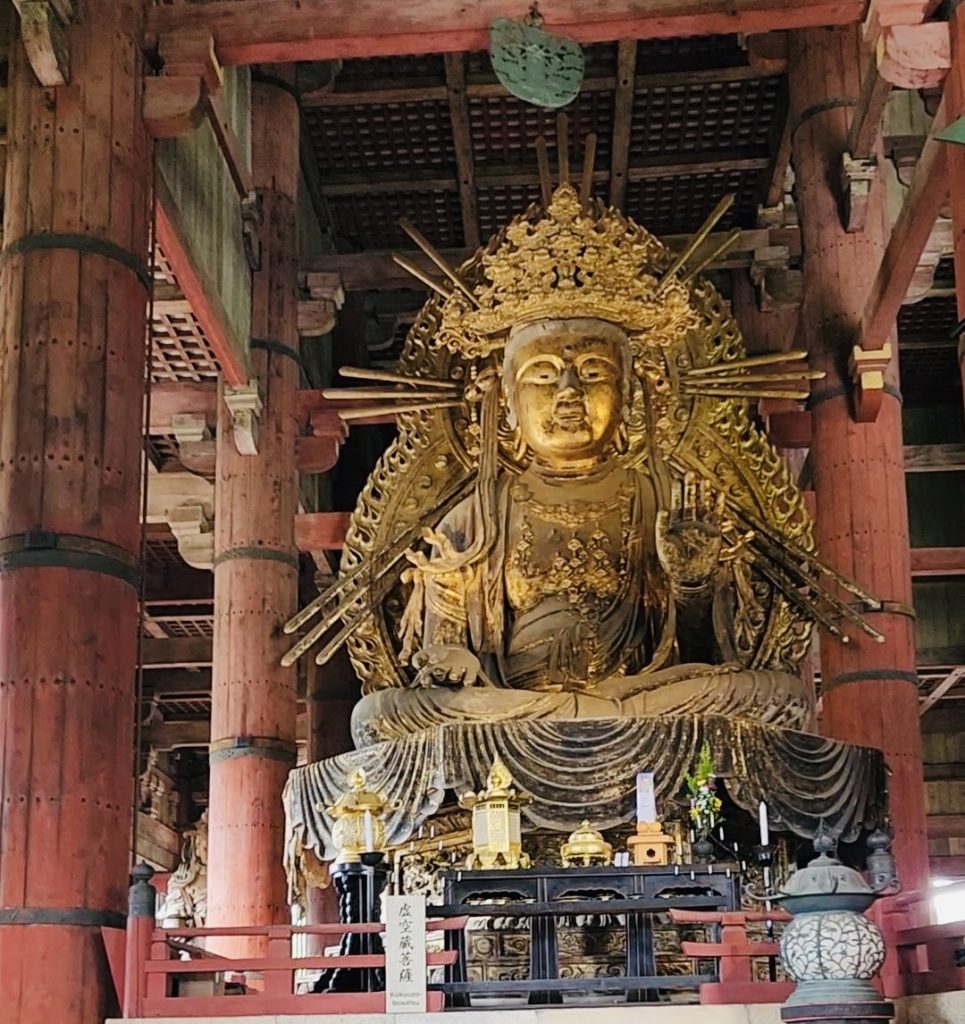
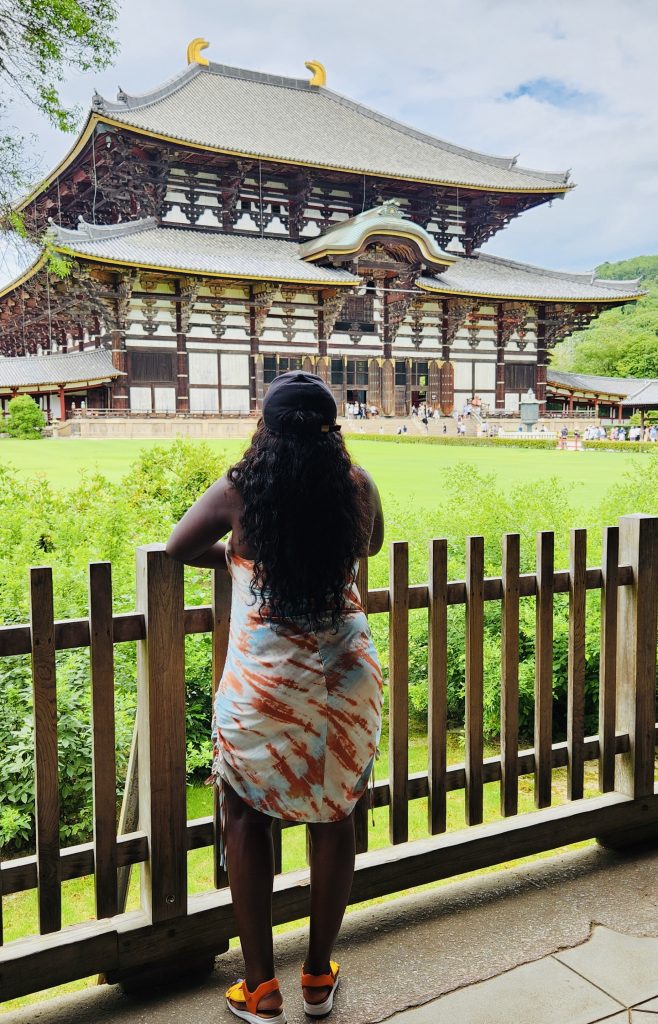
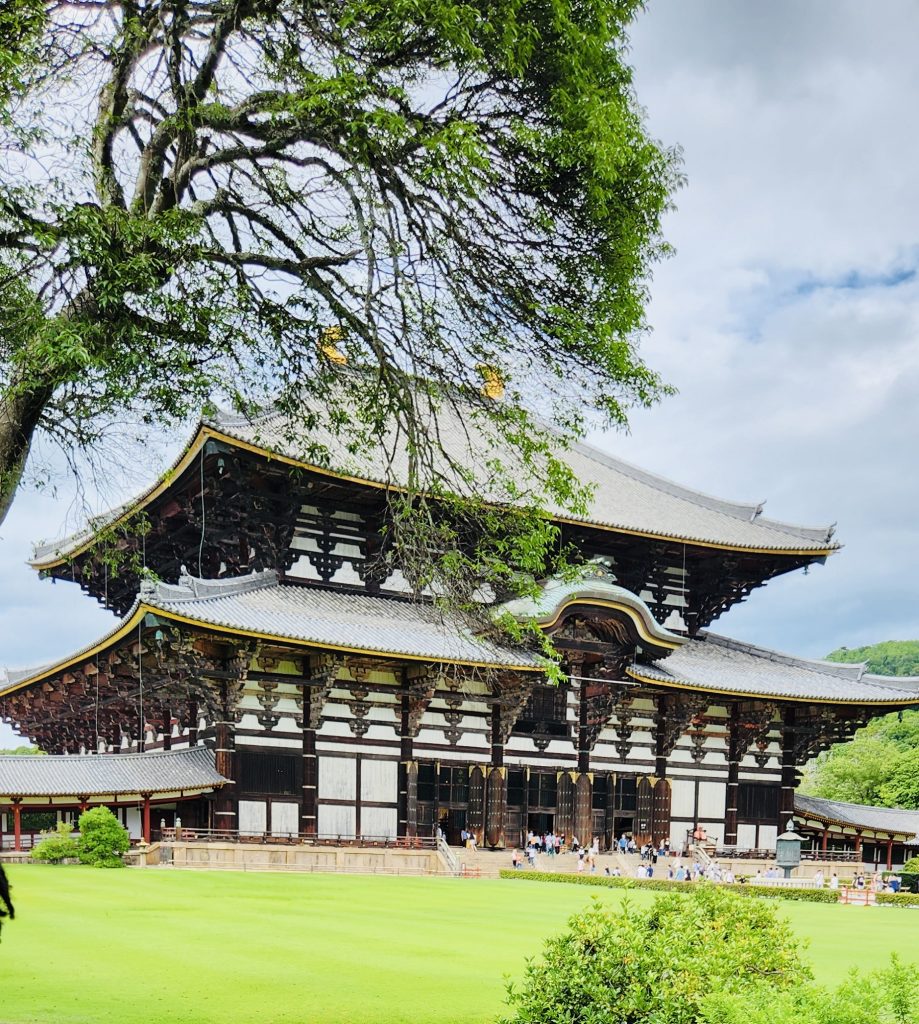
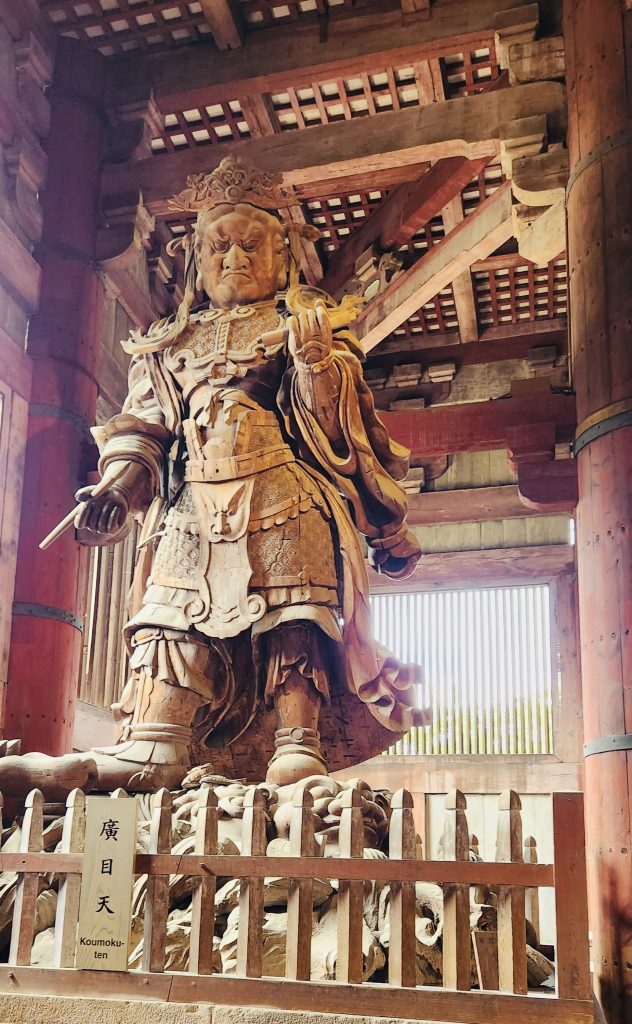

The Great Buddha Hall, also known as Todai-ji, stood as another awe-inspiring highlight. Guided by an insightful tour guide, they delved into the history of the Great Buddha Hall, tracing its origins back to the Nara period. The remarkable structure had been reconstructed twice, following devastating fires in 1180 and 1567.
Georgette, Kem, and Elle paid their respects with a solemn bow and a heartfelt prayer. As for Cece, she stood in sheer wonder before the magnificence of the colossal statue.
Osaka’s Culinary Delights

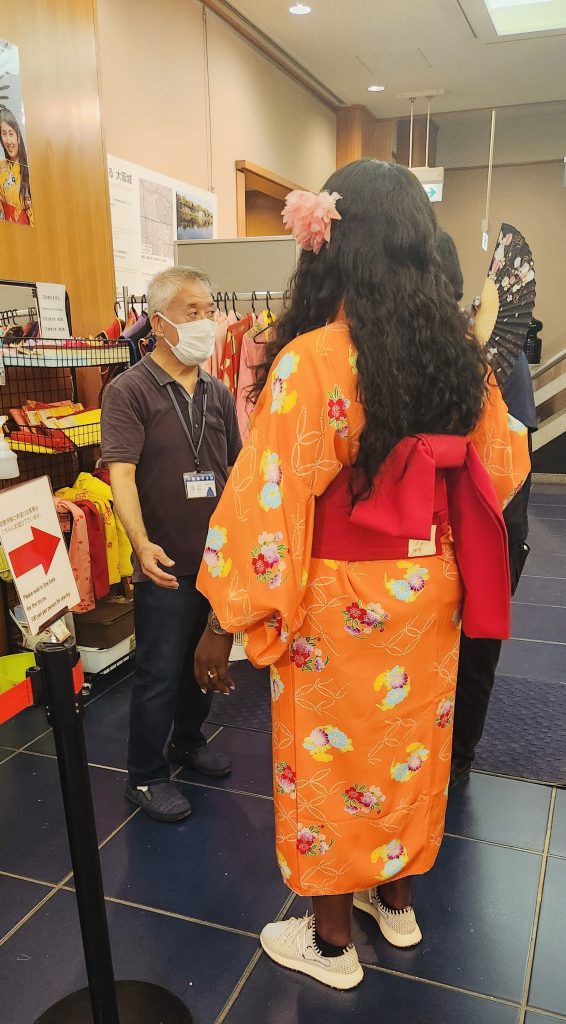
Their journey continued to Osaka, where Cece’s initial disappointment about missing Bali began to wane. The city’s culinary scene was a revelation, and Georgette, Elle, and Gabe indulged in delicious street food. Meanwhile, Cece, constrained by her IBS, continued to navigate her dietary choices.
Their itinerary included a visit to the remarkable Osaka Castle, a prominent icon steeped in Japan’s historical heritage. They explored the museum floor by floor, delving into the fascinating history of the local people in Osaka. The museum even boasted enticing shops on both the 1st and 8th floors.
Elle, on a quest for deeper immersion into the historical context, went a step further by trying on a meticulously restored Sengoku period military commander’s helmet, embracing the historical ambiance.
Hiroshima – A Message of Peace
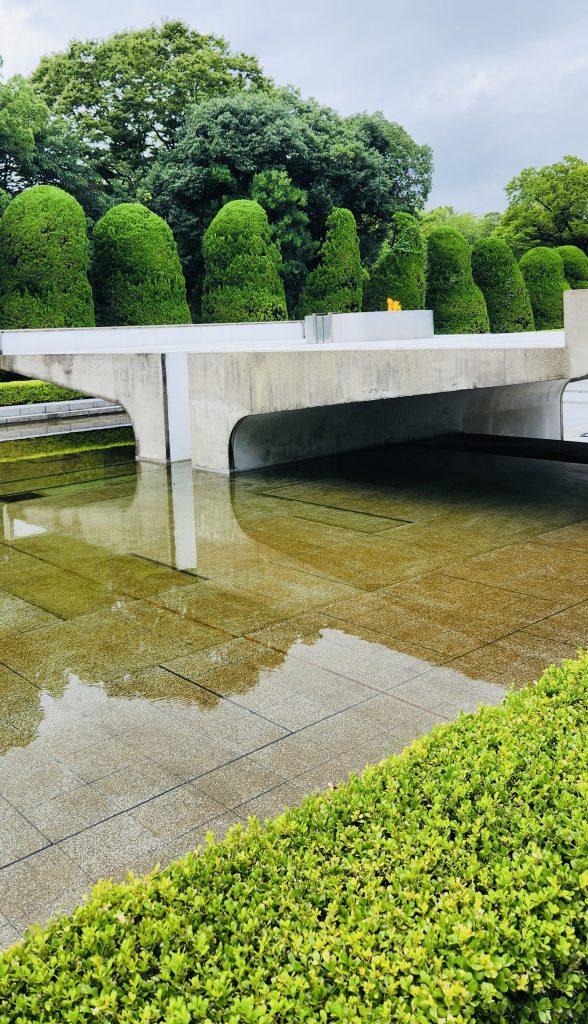


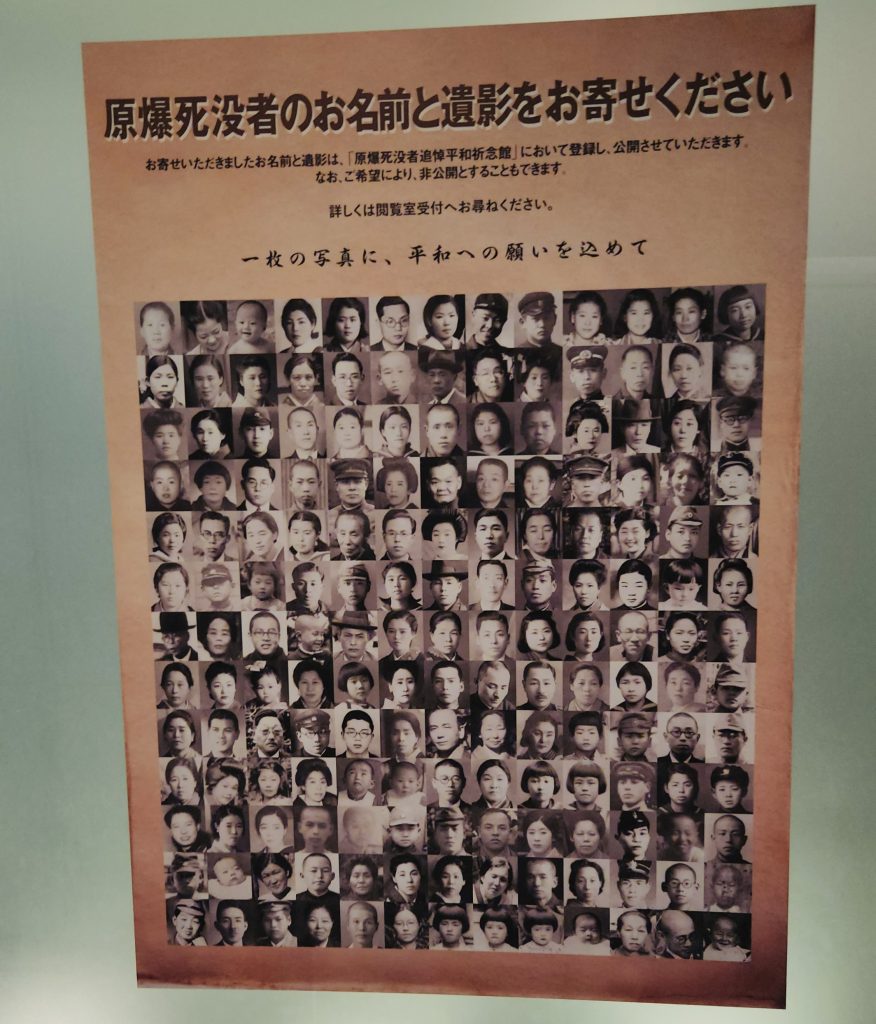

Hiroshima served as a deeply moving juncture in their journey. Here, they paid their heartfelt respects at the Hiroshima Peace Memorial and visited the somber Atomic Bomb Dome, an enduring symbol of the city’s tragic past.
The Atomic Bomb Dome’s profound impact was recognized in 1996 when it was designated as a UNESCO World Heritage Site, now residing within the serene surroundings of the city’s Peace Memorial Park. Visitors have the opportunity to reflect on the remnants and stand amidst the overwhelming presence of this site, encompassing themes of loss, tragedy, horror, and, most importantly, hope for a united and peaceful future.
In the wake of the atomic bomb’s devastation, Japan made a momentous choice not to reconstruct the area but to establish a solemn sanctuary of peace and hope. As a result, the park today features an array of memorial statues and structures, including the Atomic Bomb Dome, Hiroshima Peace Memorial Museum, Hiroshima National Peace Memorial Hall for the Atomic Bomb Victims, Children’s Peace Monument, and the Cenotaph for A-bomb Victims.
At the heart of the park stands the Cenotaph for A-bomb Victims, a stone arch monument safeguarding a repository containing the names of all known individuals who perished in the atomic bombing, regardless of their nationality. Inscribed upon this repository is a poignant message: “Let all the souls here rest in peace, for we shall not repeat the evil.” This impactful monument not only pays tribute to the lives lost but also conveys the park’s overarching message of remembrance, perfectly framing the Peace Flame and the distant ruins of the Atomic Bomb Dome.
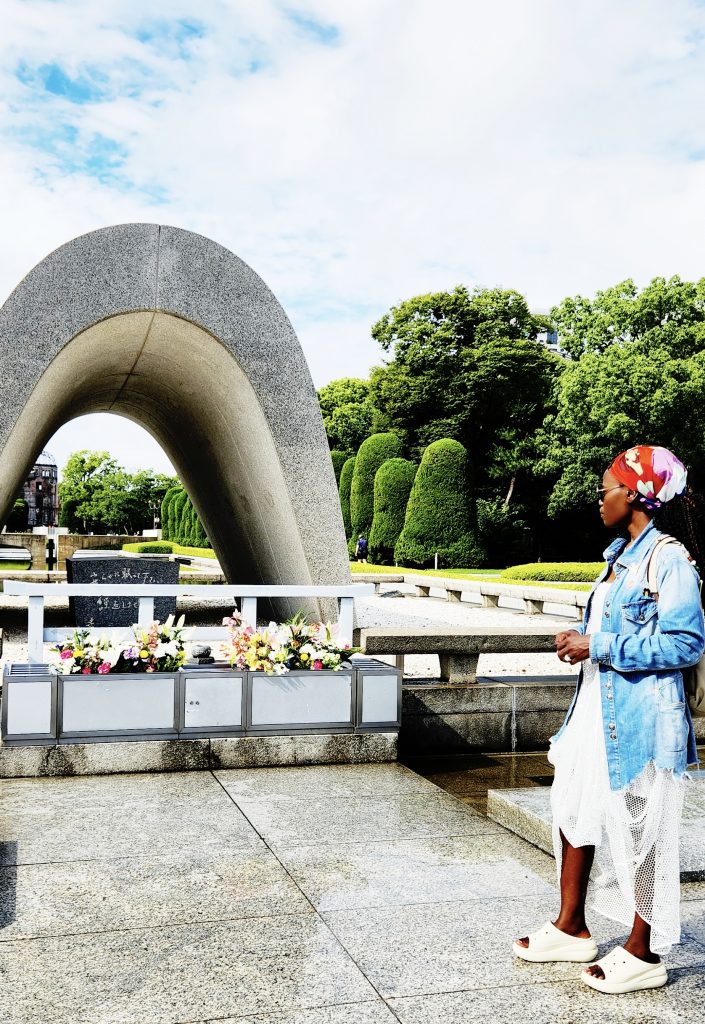
The sisters were profoundly moved by how the Japanese government and its people took pride in honoring the lives lost, creating a powerful space for reflection and contemplation.
At the Children’s Peace Monument, they had the opportunity to ring the bell. The Children’s Peace Monument serves as a poignant tribute to Sadako Sasaki, who endured the ravages of nuclear radiation during World War II and tragically passed away at the age of twelve. On top of a three-legged dome pedestal, a statue of Sadako stands with arms outstretched towards the sky, clutching a large origami crane. Faced with her own mortality, Sadako aspired to fold one thousand paper cranes, traditional symbols of longevity in Japan. The monument stands as a moving tribute to the children whose lives were claimed during the war and as an emblem of hope for a brighter, more peaceful future.
Positioned across from the Atomic Bomb Dome within Peace Memorial Park, the Hiroshima Peace Memorial Museum stands as a profound testament to the city’s history before and after the cataclysmic atomic bombing during World War II. Its mission is to educate visitors and humanize the tragic event and its harrowing aftermath.
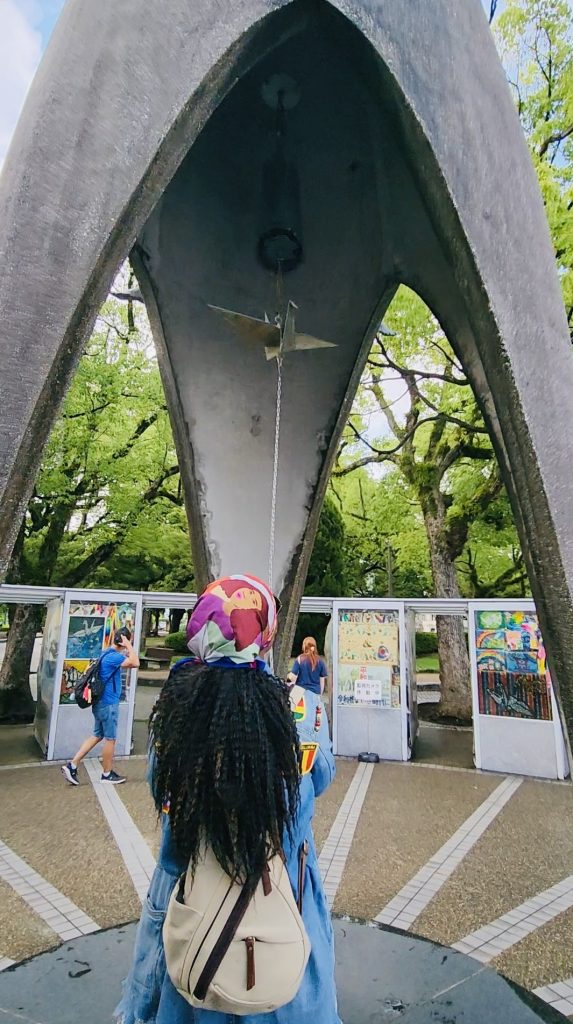
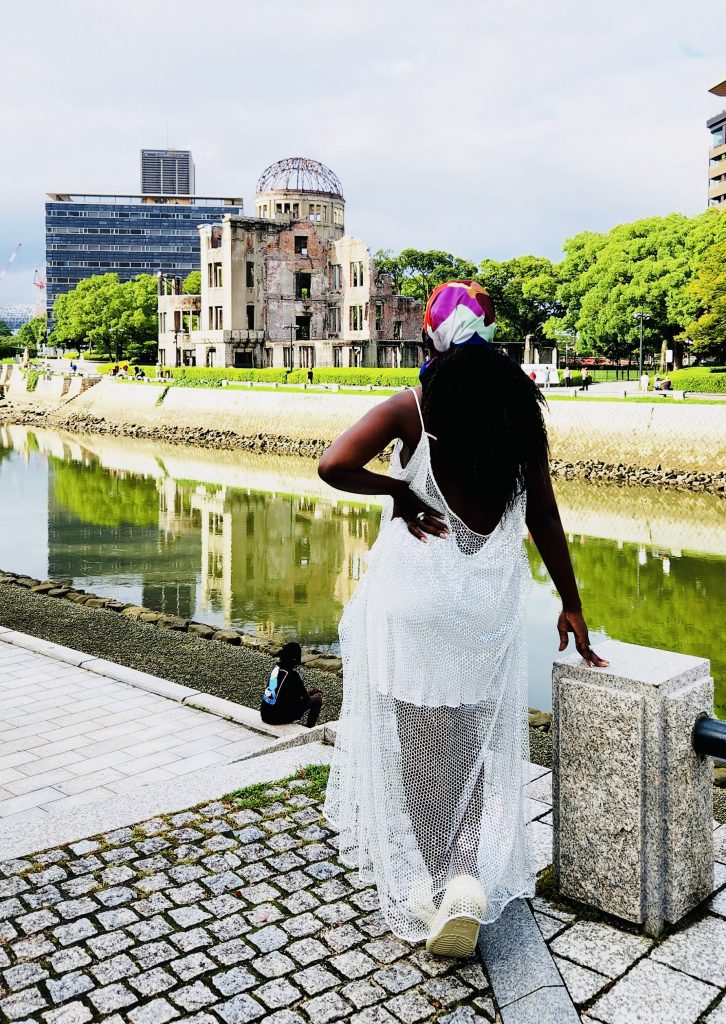

The museum bears witness to the unimaginable horrors through everyday objects discovered in the aftermath: a tricycle, a lunchbox, a school uniform—once ordinary items that now poignantly depict the instantaneous devastation caused by human actions. The walls are adorned with photographs that offer an unfiltered glimpse of the brutal aftermath. The building also houses testimonies from survivors of the bomb, known as hibakusha in Japanese.
Listening to the testimonies of some of the survivors was genuinely heart-wrenching. These poignant narratives constitute an integral part of the museum, reinforcing its core mission of advocating for the abolition of nuclear weapons.
Despite the unflinching portrayal of the horrors of war, the museum never wavers from its central message of remembrance, education, and the pursuit of a peaceful future.
The city’s resilience spirit and its fervent hope for a peaceful future left an enduring impression on them, reaffirming their commitment to embracing new experiences and valuing the resilience of humanity.
Cherished Memories
As their adventure neared its conclusion, the sisters, along with Elle, Cece, Georgette, and Gabe, felt a deep sense of fulfillment. The scorching August weather had been a challenge, but it could not overshadow the beauty of Japan, the warmth of its people, the richness of its culture, and the precious memories they had created together.
On their final day, they sat on a quiet bench in a tranquil garden, savoring the serenity around them. It was Georgette, the eldest sister, who finally broke the silence, remarking, “Though our original plans may have changed, I couldn’t envision a more perfect adventure than the one we’ve shared.” In unanimous agreement, “Les Trois Mousquetaires” nodded with hearts full of gratitude and a profound sense of fulfillment.
Their journey in Japan had etched a remarkable chapter in their lives, one that they would cherish forever.
With a promise to continue exploring the world together, the three sisters rose, ready to embark on the next adventure. As they walked away, their laughter blended harmoniously with the whispers of Japan’s enduring beauty, forever etched in their hearts.”
Comments (0)